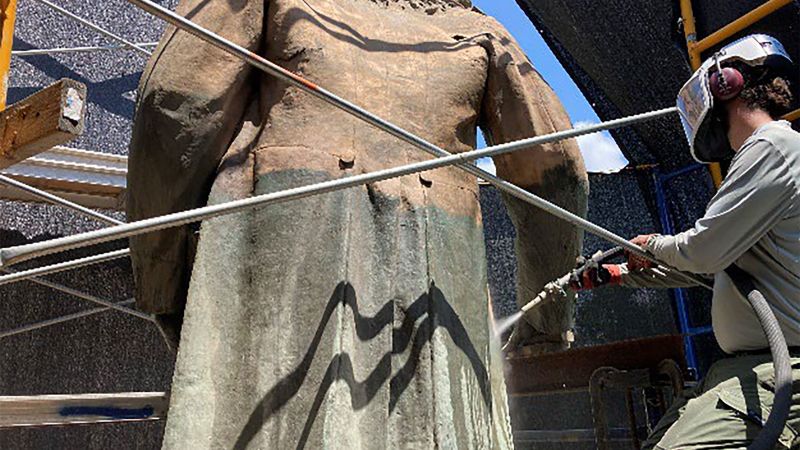The topic surrounding the restoration of Confederate monuments has resurfaced amid a broader debate over historical memory, national pride, and social justice in the United States. Following a resurgence in interest in examining America’s past, particularly in light of racial injustices and protests, the Trump administration has announced plans to reinstall two prominent Confederate monuments. This decision fulfills a directive from former President Donald Trump to restore statues removed amid the nationwide protests following the tragic death of George Floyd in 2020.
On a recent Monday, the US National Park Service (NPS) revealed plans to restore a statue commemorating Albert Pike, a Confederate military officer, located in Washington, DC. In a separate announcement, Defense Secretary Pete Hegseth indicated that another notable Confederate memorial, often referred to as the “Reconciliation Monument,” would be reinstated at Arlington National Cemetery in Virginia. The revival of these monuments is emblematic of a larger than life debate, particularly as different factions in American society grapple with how to honor history while addressing its more controversial and painful aspects.
Secretary Hegseth expressed his enthusiasm on social media about the return of the Reconciliation Monument, a work by sculptor Moses Ezekiel that was originally unveiled in 1914. Hegseth criticized the removal of the monument, attributing the decision to “woke lemmings” who, in his perspective, seek to erase historical narratives rather than honor them. This statement highlights a pronounced ideological divide, wherein proponents of the Confederate monuments argue that they serve as important historical artifacts, while opponents view them as symbols of racism and oppression embedded in America’s national identity.
The Reconciliation Monument is designed in bronze and rests atop a 32-foot-tall pedestal that features representations of slavery. Notably, the figures depicted include a Black woman portrayed as a “Mammy” holding an infant of a White officer, along with an enslaved man depicted as following his owner into battle. The monument embodies the “Lost Cause” narrative, a historical revisionism that romanticizes the Confederacy and downplays slavery’s significance in the Civil War—a sentiment that further complicates the discourse surrounding such monuments today.
Virginia’s Republican Governor Glenn Youngkin articulated his frustration with the removal of the Pike statue in 2023, as part of a broader initiative led by the Biden administration to reevaluate and eliminate Confederate symbols from military installations. This sentiment is echoed by many who argue that preserving such imagery serves to honor Southern heritage and history, even as it raises concerns for those who interpret it as an endorsement of a painful legacy entrenched in slavery and racial discrimination.
While the political landscape surrounding these monuments continues to evolve, Secretary Hegseth has prioritized the restoration of Confederate imagery by undoing various changes instigated by previous administrations. The recent executive orders from Trump that mandated the reinstatement of these statues reflect an effort to beautify the nation’s capital and restore monuments deemed important to American history—a task entrusted to the NPS.
Pike’s Confederate affiliation underscores a complicated legacy; he was involved with the Confederacy and later participated in Freemasonry. The decision to reinstall his statue, which had been removed during the height of civil unrest, has drawn sharp criticism. Democratic Delegate Eleanor Holmes Norton from Washington, DC, labeled the reinstatement “moral objectionable,” arguing that Pike’s past reflects a pattern of dishonor and misconduct, diminishing the legitimacy of honoring his legacy through such statuary.
Pike’s life journey illustrates the complexities inherent in American history. He initially hailed from Massachusetts, later moving southward where he established a newspaper and gained prominence during the Civil War. Although he rose to prominence as a Freemason, Pike’s reputation is marred by disputed allegations regarding Klan affiliations.
The controversy surrounding these monument restorations highlights a crucial point in America’s historical journey. As the country wrestles with its past, the conversation continues to evolve, centering around how society chooses to memorialize figures and events that invoke diverse interpretations and painful histories. In essence, the debate on Confederate monuments is not just about the statues themselves, but rather a broader reflection on America’s understanding of its own history and the values it seeks to uphold in the present and future. As these events unfold, the obligation to confront and contextualize the less palatable aspects of history becomes all the more pertinent in achieving social progress and reconciliation.











